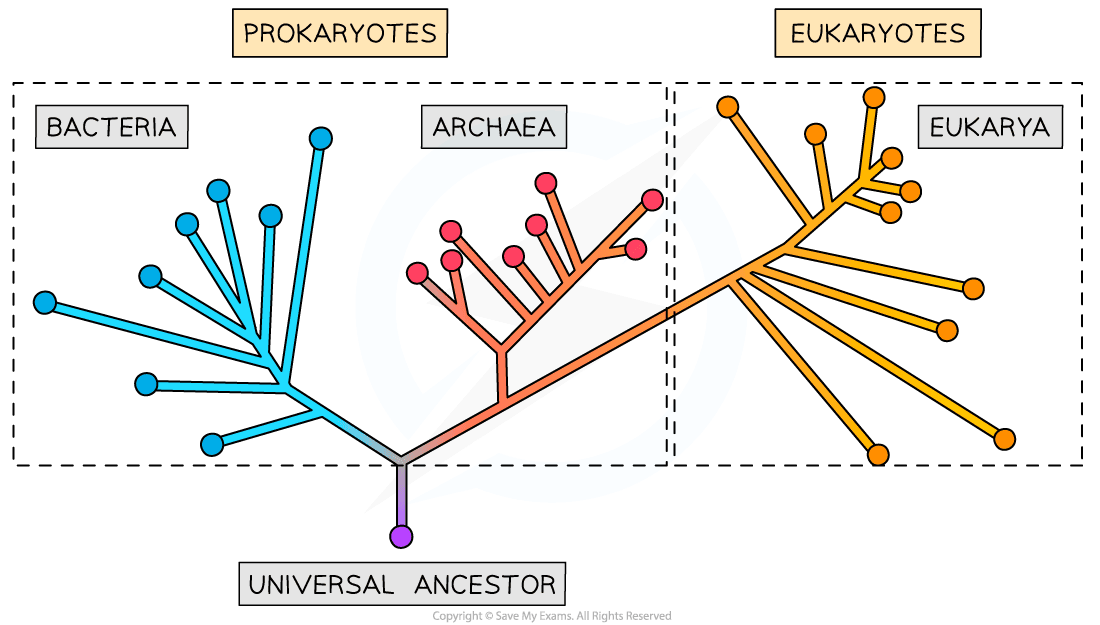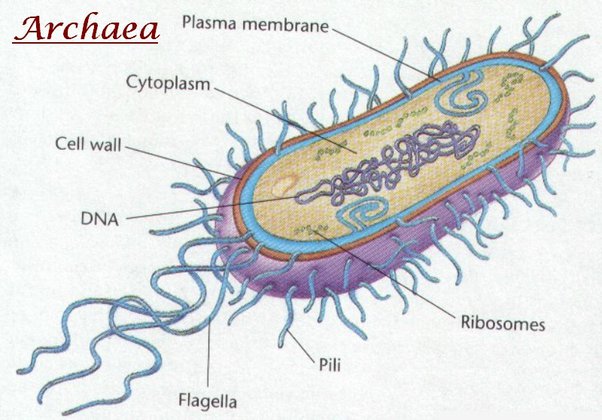Prokaryotes Study Guide
Introduction:
Prokaryotic organisms are small single-celled organisms that have a very simple structure. The Prokaryotic cells have a plasma membrane. However, these do not have any internal membrane-bound organelles in their cytoplasm.
Do prokaryotes have a nucleus?
Nope, they don’t. Infact, the lack of the nucleus and the other membrane-bound organelles differentiate the prokaryotes from the eukaryotes.
- The prokaryotic genetic material is in the form of a single circular DNA molecule.
- The DNA in the prokaryotes is found in the central area of the cells, known as the nucleoid, and this does not have a nuclear membrane.
- Prokaryotes also have small and circular DNA molecules called plasmids, different from the chromosomal DNA. These provide genetic advantages in a specific environments.
Prokaryotic Cell
Prokaryotes are abundant, come in different sizes and shapes, and make up a major part of the biomass of this planet.
The prokaryotic cells are usually 0.1 to 5 micrometers in length compared to eukaryotic cells which are much larger, between 10 to 100 micrometers.
The prokaryotic cells have a high surface area to volume ratio, and this is because they are small, and this lets them obtain a lot of nutrients through their plasma membrane.
-
Prokaryotic cells have a nucleoid region. This is an irregularly shaped region containing the cell’s DNA, and it does not have a nuclear envelope.
-
The cell wall surrounding the cells in the prokaryotes protects the cell interior and helps maintain the cell’s shape.
-
Prokaryotic cells contain cytoplasm, a gel-like fluid that fills up the cell. It also has a cytoskeleton that holds the cell components in its place.
-
These cells also have ribosomes:organelles that produce protein.
-
They also have vacuoles that are small spaces in the cell which store nutrients and help eliminate waste.
-
Some prokaryotes have flagella, which are structures in the form of a tail that allow the organism to move around.
-
These could also have pili which are small hair like structures that let the bacteria adhere to surfaces.
Characteristics and Examples of Prokaryotes
Organisms are placed in either one of the three major groups based on their cell type and other features. These three groups are called domains. They are Archaea, Bacteria & Eukarya.
Prokaryotes are found in the domains Archaea and Bacteria.
BACTERIA AS PROKARYOTES
- Bacteria are single-celled microorganisms found everywhere on earth.
- They are diverse in their structure and shape. Many bacteria live in varied ecosystems on the earth and our bodies.
- The presence of a flagella, cell membrane, process of protein synthesis and the presence of peptidogycan in their cell wall are characteristics of bacterial cells.
- In the human gut, the number of bacteria outnumbers the number of human cells.
ARCHAEA AS PROKARYOTES
- The archaean cells are also prokaryotes, and these are the same shape and size as the bacteria, and these are also unicellular. The Archaea share traits with both the bacteria and the eukaryotes.
- The Archaea lack peptidoglycan in their cell walls, have a cell membrane like the bacteria.
- The Archaean cells have a unique flagella and carry out protein synthesis by a process similar to those of eukaryotes but not of bacteria.
- Some archaea survive in extreme weather, like in hot springs. These are also found in oceans, soils, inside organisms, and marshlands.
Conclusion:
- Prokaryotes are single-celled organisms that lack a nucleus.
- Prokaryotes are the simplest organisms and lack other membrane-bound organelles.
- The first cells and organisms to evolve would be classified as prokaryotic
- Eukaryotic cells may have evolved when an Archaean cell and Bacterial cell joined together into one.
FAQs:
1. What is the difference between a prokaryotic and a eukaryotic cell?
The prokaryotes do not have a true nucleus, and the nucleus does not have a nuclear membrane, and the eukaryotic cells are enclosed in a nuclear membrane. The prokaryotes also do not contain chloroplast and mitochondria in the eukaryotic cell.
2. Name some examples of prokaryotes.
Bacteria and Archaea are examples of prokaryotes.
3. What is the definition prokaryotic cell?
They are organisms that do not have a distinct nucleus and organelle.
4. Is a virus prokaryotic or eukaryotic?
Viruses are neither eukaryotes nor are they prokaryotes.
5. What is the main characteristic of the prokaryotic cells?
The prokaryotes cells go through asexual reproduction. Most pro cells divide through binary fission, where the cells divide and form two daughter cells. There is a difference in how the cells divide in prokaryotes because they do not pose a nuclear membrane surrounding their DNA.
6. What are the 8 basic parts of a prokaryotic cell?
The cells of the prokaryotes contain the following:
- Cell wall
- Cell membrane
- Capsule
- Pili
- Flagella
- Ribosomes
- Plasmids
We hope you enjoyed studying this lesson and learned something cool about Prokaryotes! Join our Discord community to get any questions you may have answered and to engage with other students just like you! Don’t forget to download our App to experience our fun, VR classrooms – we promise, it makes studying much more fun! 😎
Sources:
- Prokaryotes https://flexbooks.ck12.org/cbook/ck-12-biology-flexbook-2.0/section/7.1/primary/lesson/prokaryote-evolution-bio/ Accessed on 7 Dec 2021
- prokaryote / procariote https://www.nature.com/scitable/definition/prokaryote-procariote-18/ Accessed on 7 Dec 2021
- Prokaryotic Cell https://biologydictionary.net/prokaryotic-cell/ Accessed on 7 Dec 2021


